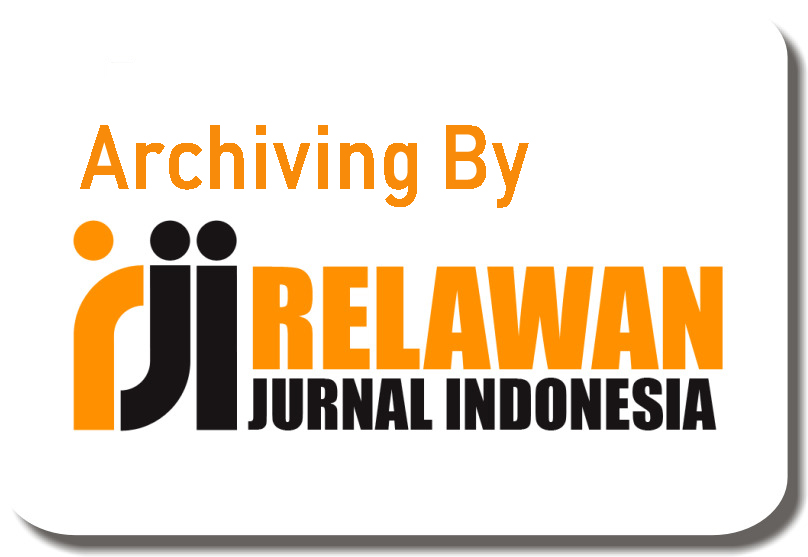The Role of ChatGPT in EFL Writing: Students’ Perspective
Abstract
English language instruction is one of the many facets of contemporary life that ChatGPT has affected. The purpose of this study was to investigate ChatGPT's function as a writing aid for EFL students enrolled in writing classes. In particular, it looks at how the students use ChatGPT, an artificial intelligence tool. The study was carried out at one of Jambi's public universities' English departments. This study used a case study methodology in conjunction with a qualitative approach. Five English education students enrolled in writing classes participated in this study. Based on the criteria, the researcher chose the right individuals using purposive sampling. The researcher interviewed the individuals in order to collect data. The researcher applied thematic analysis to the data analysis. According to the study's findings, ChatGPT plays six roles in the writing process. They are gathering ideas, recommending references, identifying the best words and vocabulary, locating an outline or story plot, organizing the writing outcome, and even having discussions on the writing content.
Keywords
Full Text:
PDFReferences
Agustini, N. P. O. (2023). Examining the Role of ChatGPT as a Learning tool in Promoting Students’ English Language Learning Autonomy relevant to Kurikulum Merdeka Belajar. Edukasia: Jurnal Pendidikan Dan Pembelajaran, 4(2), 921–934.
Andrews, S. (2003). Teacher language awareness and the professional knowledge base of the L2 teacher. Language Awareness, 12(2), 81–95.
Bin-Hady, W. R. A., & Al-Tamimi, N. O. M. (2021). The use of technology in informal English language learning: evidence from Yemeni undergraduate students. Learning and Teaching in Higher Education: Gulf Perspectives, 17(2), 107–120. https://doi.org/10.1108/LTHE-09-2020-0037
Braun, V., & Clarke, V. (2006). Using thematic analysis in psychology. Qualitative Research in Psychology, 3(2), 77–101.
Byrne, D. (1991). Teaching Writing Skills. Longman.
Corbin, J., & Strauss, A. (2008). Basics of Qualitative Research: Techniques and Procedures for Developing Grounded Theory. Sage.
Creswell, J. (2012). Educational Research. Pearson Education.
Davies, G., Otto, S., & Ruschoff, B. (2013). Historical perspectives on CALL BT - Contemporary Computer-Assisted Language Learning (M. Thomas, H. Reinders, & M. Warschauer (eds.); pp. 19–35). Bloomsbury Academic.
Dawson, C. (2002). Practical Research Methods: A User-Friendly Guide to Mastering Research. How to Books.
Fitria, T. N. (2023). Augmented reality (AR) and virtual reality (VR) technology in education: media of teaching and learning: a review. International Journal of Computer and Information System (IJCIS), 4(1), 14–25.
Glazier, T. F. (1994). The Least You Should Know about English Writing Skills. Harcourt Brace College Publishers.
Hamp-Lyons, L., & Heasly, B. (2006). Study Writing (2nd ed.). Cambridge University Press.
Harmer, J. (1992). The Practice of English Language Teaching. Longman.
Hedge, T. (1991). Writing. Oxford University Press.
Kim, H., Choi, H., & Lee, S. (2023). Speaking fluency improvement through structured speaking tasks: A case study in Korean EFL classrooms. Asian EFL Journal, 25(2), 45–67.
Kim, S., Shim, J., & Shim, J. (2023). A Study on the Utilization of OpenAI ChatGPT as a Second Language Learning Tool. Journal of Multimedia Information System, 10(1), 79–88.
Klimova, B. (2011). Review on the Use of Emerging Technologies in Teaching English as an Applied Language at the University Level.
Koubaa, A., Boulila, W., Ghouti, L., Alzahem, A., & Latif, S. (2023). Exploring ChatGPT capabilities and limitations: A critical review of the NLP game changer.
Li, L., & Huang, C.-Q. (2024). The Incorporation of Peer Learning into MosoTeach-Supported Flipped Language Class: Effects on Student Motivation, Participation, Feedback and Test Performance. Journal of Computer Assisted Learning, 40(2), 557–572. http://eric.ed.gov/?id=EJ1416809
Muñoz, S. A. S., Gayoso, G. G., Huambo, A. C., Tapia, R. D. C., Incaluque, J. L., Aguila, O. E. P., & Arias-Gonzáles, J. L. (2023). Examining the Impacts of ChatGPT on Student Motivation and Engagement. Social Space, 23(1), 1–27.
Nunan, D. (1999). Second English Teaching and Learning. Heinle & Heinle Publishers.
Ratnam, M., Sharma, B., & Tomer, A. (2023). ChatGPT: Educational Artificial Intelligence. International Journal of Advanced Trends in Computer Science and Engineering, 12(20), 84–91.
Shaikh, S., Yayilgan, S. Y., Klimova, B., & Pikhart, M. (2023). Assessing the Usability of ChatGPT for Formal English Language Learning. Investigation in Health, Psychology, and Education.
Thorp, H. H. (2023). ChatGPT is fun, but not an author. Science, 379, 313.
Tod, D., Hardy, J., & Oliver, E. (2011). Effects of self-talk: A systematic review. Journal of Sport and Exercise Psychology, 33(5), 666–687.
Young, R., & Ferguson, F. (2020). Writing for Pleasure: Theory, Research and Practice. Routledge.
Zhou, C., Qiu, C., & Acuna, D. E. (2022). Paraphrase Identification with Deep Learning: A Review of Datasets and Methods. ArXiv. https://doi.org/10.48550/arXiv.2212.06933
DOI: https://doi.org/10.31004/jele.v10i3.944
Refbacks
- There are currently no refbacks.
Copyright (c) 2025 Catherine Rohmoia Capah, Mukhlash Abrar, Luxvhyona Fharadhylla Prapassel, Berliana Sukma Tri Sukarno

This work is licensed under a Creative Commons Attribution-ShareAlike 4.0 International License.



